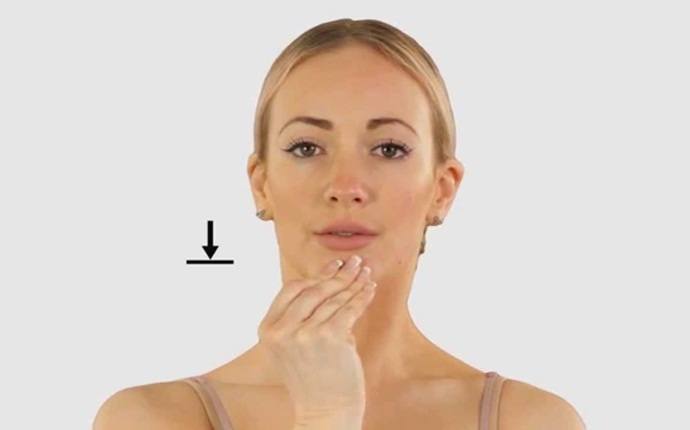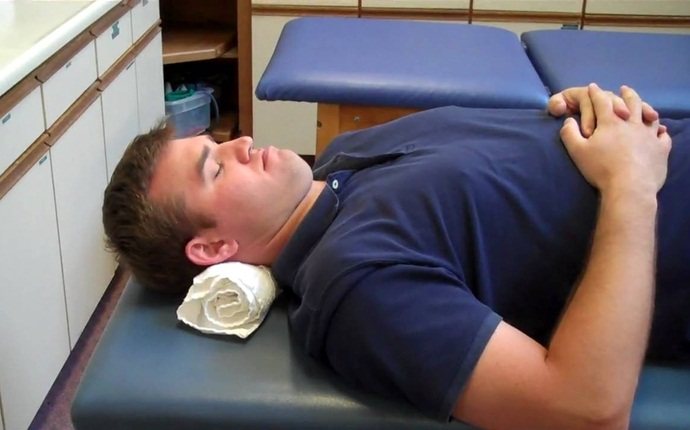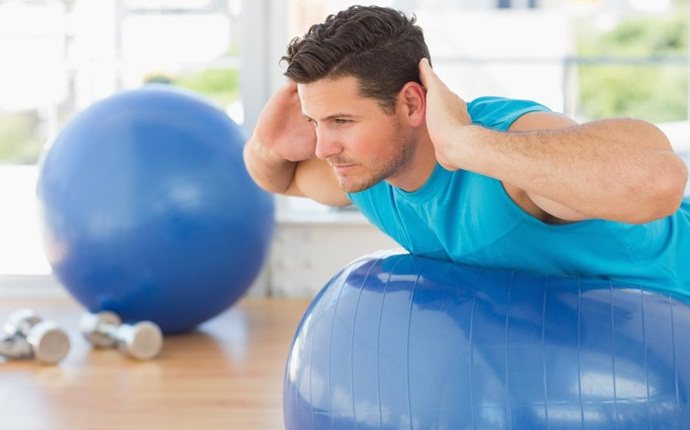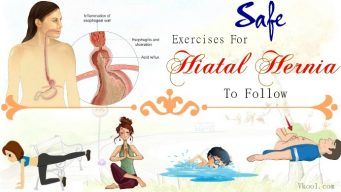
TMJ or the temporomandibular joint is the joint connecting the jaw to the skull’s temporal bones. Temporomandibular joint disorder, is called as TMD, happens when there are issues with the jaws and muscles in the face.
Best Exercises For TMJ Disorder – List Of The Most Common Exercises
There are a plenty of symptoms of TMD. It is also difficult to know whether you have TMD or not as one or all symptoms can be present for some other problems. Some of the common TMD signs are:
Headaches, earaches, and pressure behind your eyes
Pain in your face, ear and jaw area
Jaw gets stuck or goes out of place
Swelling of your face
A popping or clicking sound when you open or close your mouth
Tenderness of your jaw muscles
Learn More: Facial Muscle Exercises For Men And Women
The TMJ is a unique joint in the body, allowing you to get forward, backward and side-to-side jaw movement. When there is something that goes wrong with the TMJ, the risk of developing TMJ disorder, which is the most common pain near the ears or in the jaw, will be higher.
Although the discomfort that TMJ disorders bring can go away on its own way, some people have suggested that exercises for TMJ can help relieve the irritation. However, as individual cases are different, exercises for TMJ may ease the pain for some individuals but not others. These exercises are created to retrain your jaw to help it move correctly without pain whilst helping your muscles stronger.
In this article today, I will reveal some of the best exercises for TMJ in details, so you should keep your eyes on the following health facts and the common exercises for TMJ that you should follow for good. They are:
1. Exercises For TMJ – Strengthening Exercises

This is the first out of the best exercises for TMJ that I want to reveal in this entire article and want you and my other readers to know and follow for good!
When suffering from discomfort and pain from a TMJ problem, exercising the jaw area may not be really helpful. According to a study, pain that has declined can create a list of strengthening TMJ exercises that prevent it from returning. These TMJ exercises involve in closing and opening the mouth while putting some resistance on the chin.
Read More: How To Get Rid Of Double Chin Fast
How to do:
To perform a resisted mouth opening exercise, you should place your thumb or two of your fingers under the chin and slightly push downward against it. When you push up the thumb or fingers on your chin, you open the mouth slowly, keeping it open for a couple of seconds before closing it in a slow way.
To perform a resisted mouth closing exercise, you should place your thumbs under the chin and two index fingers that come from the same hand on the ledge between the lower lip and chin. Gently push down on the chin when you close the mouth.
Read More: Home Remedies For Dry Mouth At Night
To perform a tongue-up exercise, you simply open and close the mouth slowly while touching the mouth’s roof with your tongue.
To perform forward jaw movement, place an object between the front teeth and then move the bottom jaw forward. This will move the bottom teeth in front of the top teeth. You can try increasing the thickness of your chosen object when this process becomes easier.
To perform side-to-side jaw movement, place an object between the front teeth. Move the jaw slowly from side to side. You can increase the thickness of your chosen object if you feel that this exercise becomes easier.
Strengthening exercises are actually effective home remedies for TMJ pain, so try them out!
2. Exercises For TMJ – Stretching Exercises
Slightly stretching the joint and jaw area can also help you prevent the pain of TMJ disorders from returning. A way to stretch the jaw involves in pressing the tip of your tongue to the roof of the mouth. After that, you slowly open the mouth as widely as possible without causing painful. In case you feel painful, you should stop doing this exercise immediately. You may need more time before engaging it.
Learn More: Home Remedies For Tongue Ulcers In Adults
Similar stretching exercises that focus on moving your jaw as much as you can without leading to discomfort. To perform these exercises for TMJ successfully, you should try:
Get started with the closed mouth and the jaw as relaxed as you can. With the teeth gently apart, you open slowly the mouth as widely as possible while still looking up with the eyes. Keep the mouth open for a couple of seconds, and then close it in a slow way.
When the mouth is closed again, you try to move the jaw to your left whilst looking to the right. Remember not to turn your head or neck. Keep this position for a couple of seconds, and then make a move back to center. Repeat this stretching exercise, moving the jaw to your right side whilst looking to the left.
Read More: Neck Strengthening Exercises At Home With And Without Weights
3. Exercises For TMJ – Relaxation Exercises

Exercises for TMJ that make you relax can also help you relieve the pain from TMJ disorders. Especially, in case your pain is stress-related. It is also recommended that breathing exercises will help to ease the tension that occurs in the jaw muscles. In case you feel tense, consider inhaling for a count of 10, then exhaling slowly. Although it is not a form of TMJ exercise, learning the way on how to reduce stress in the life can help you ease any TMJ-related discomfort that occurs as a result of stress.
This is, in fact, one of the most common exercises for TMJ that you should know and follow to relieve TMJ symptoms.
Learn More: Benefits Of Breathing Exercises For Stress Relief & Health
4. Exercises For TMJ – 5-Minute Exercise
This is an exercise to help ease TMJ by strengthening the ligaments around the jaw and relaxing the muscles, which close the mouth. When you are relaxed, you try performing this exercise for good.
How to do:
∙ While you are sitting upright in a chair, close the mouth to touch the lower and upper teeth without clenching them. Let the tip of the tongue rest behind the upper teeth.
∙ Let the tip of the tongue go backwards towards the soft palate as far as possible. Remember to keep the teeth together.
Read More: Forward Neck Posture Exercises
∙ Gently force the tongue back to keep the contact with the palate. After that, open your mouth slowly until you have a feeling that the tongue is pulled away. Keep the mouth in this position for about 5 seconds before you close the mouth to relax.
∙ Repeat this exercise slowly but firmly for 5 minutes twice a day. At first, you can use a mirror to ensure that your teeth can be closed straight up and down.
When you open the mouth, you should have a feeling of tension under the chin and in the neck’s back. However, you should not hear any noise or clicks from the joints. In case you do, restart the exercise until it is click-free. Remember not to perform this TMJ exercise more than 5 minutes twice a day for the first week. But you can do it as often as possible later.
In fact, this is also among the best exercises for TMJ, so you should follow this exercise to deal with TMJ symptoms effectively.
Learn More: 9 Tips On How To Eliminate Neck Pain Naturally At Home
5. Exercises For TMJ – Restoring Exercise
Try an exercise to restore normal motion, strengthen jaw muscles and improve flexibility. Your dentist, doctor or physical therapist can suggest some additional exercises. Remember not to perform this exercise if you feel more painful or it makes your TMJ’s pain worse.
How to do:
∙ While watching out yourself in a mirror, you open and close the mouth gently, falling the jaw straight up and down
∙ Do this exercise for a couple of minutes every morning and night.
∙ Practice this exercise regularly until you can see improvements in the jaw’s motion.
This is in brief one of the most common exercises for TMJ , so you should not look down but try to follow this exercise and enjoy a healthy jaw.
Do you want to know other common exercises for TMJ? Continue reading this entire article and try to follow these exercises for good.
Read More: 10 Shocking & Interesting Facts About Exercise You Don’t Know
6. Exercises For TMJ – Chin Tuck Exercise

This is an exercise, which you can do in order to reduce TMJ pain. Most of the patients with TMJ disorders experienced improper head placement because of poor posture. You will also need a mirror to perform correctly this exercise.
How to do:
Allow the arms to rest on the sides and allow your back to straighten. Look at the mirror and fix your posture as getting a right posture is very important.
Move the chin forward without and do not bend the head. Now, use the fingers to move the chin back. Only the chin and neck should be moved.
Repeat this exercise a couple of times daily. If you feel painful during this exercise, stop right now to avoid straining the body too much.
This is actually also one out of the best exercises for TMJ that a lot of people in the world have been following to reduce TMJ symptoms, so you should not skip out this exercise for good.
Learn More: 38 Best Exercises For Shoulder Impingement Syndrome
7. Exercises For TMJ – Jaw Thrust Exercise
Another out of the best exercises for TMJ that I want to reveal in this entire article and want you and my other readers to know and remember to follow is that jaw thrust exercise can help to deal with TMJ symptoms effectively.
How to do:
Relax the jaws and push the jaw slowly forward when your upper teeth separate completely.
Allow your lower teeth to move as far as possible and do not push or strain yourself. If you get any pain, stop this exercise immediately or move your jaw to a shorter distance.
Allow your lower jaw to rest for a couple of seconds, and then repeat this exercise more several times.
Repeat this process daily to relax the jaws as well as help to replace the function of muscles.
8. Jaws- Massaging Exercise
Massaging the jaws is a good way to help reduce the tension; therefore, it is useful when you get TMJ pain. This is also one of the best exercises for TMJ that you should know and follow for good, especially people who want to deal with TMJ pain at home.
How to do:
Put the fingertips in between the lower jaw and temporal bone. This is the place where your jaws meet at the ears ’sides.
Use circular motions and slightly massage this area. Remember not to press your soreness.
9. Exercises For TMJ – Exercise For Spines

Another one on the list of the best exercises for TMJ that I would like to introduce in this entire article today and want you and my other readers to know and consider following this exercise if you are trying to relieve the pain and swelling caused by TMJ disorders.
Stress is a common cause of TMJ, so exercise for spine can relax the nervous system and it is a very useful remedy for TMJ.
How to do:
Sit in a chair and bend the head forward, so that your chin can touch your chest. Interlock all of your fingers and place them behind your head.
Push the head back while the hands keep this backward movement. Remember not to press too hard.
Repeat this exercise 3-5 times twice daily in order to relax your spines.
This exercise is very effective for TMJ pain so you should not skip out this exercise. Continue reading this entire article and try to follow one or more of these exercises as soon as possible.
10. Deep Breathing Exercise
How to do:
Lie down and put your right hand on the chest and left hand on the stomach. Relax for sometimes.
Take deep breaths and slowly exhale.
Repeat this process 10-20 times.
In fact, this is among the most common exercises for TMJ, so people should try to follow to ease your TMJ pain.
11. TMJ Recovery Exercises
These exercises go in stages and they should be approved by the dentist. They can be modified to meet your need and health condition. Perform these exercises gently. If you get any pain, stop immediately and talk to your dentist.
How to do:
Stage One Exercises: do every 1-2 hours
Nodding: Stand straight and keep the head up. Keep the teeth and the roof of the tongue not touching. Next, nod the head up and down gently about 10 times. Remember to move your head, not your neck.
Swallowing: You swallow 30-60 seconds. The tongue has to go flat to the mouth’s roof, teeth gently apart.
Tongue-On-Roof: Put the tongue at the back of the teeth. Keep this position when opening and closing the jaw 10 times.
Upper Body Relaxation: Shrug the shoulders and clench the fists when inhaling for 3 seconds. Next, relax the shoulders and hands when exhaling for 5 seconds. Do this process twice.
Stage Two Exercises: do 3 times daily
Resisted Jaw Opening:
Neck Stretch: Put one hand on the opposite shoulder. Keep it down. Tip the head away from the shoulder. Keep the face forward when you stretch about 5 seconds. Do this process again for the another side.
Neck Stability: Put one hand on your head’s side. Push the hand and head firmly for about 3 seconds. Remember not to move your head. Next, relax and repeat this exercise 3 times from front to back.
Neck Rotation: Turn the head to the side and keep this posture for 3 seconds. Next, relax and do this process on another side. Repeat 3 times per side.
Standing Back-Ends: This exercise is similar to Neck Stretch exercise.
Stage Three Exercises: do 3 times daily.
Jaw Stability: This exercise is similar to Neck Stretch exercise.
Jaw Stretching: Open the jaw as far as possible. Put the thumb under the chin and then push up for 3 seconds without allowing the jaw to close. Next, relax and then put a finger on the lower teeth. Pull down slightly and keep for 3 seconds. Relax again and repeat this exercise 3 times.
Back Strengthening Exercises: This exercise is important so that the muscles will keep the back straight and correct.
12. Tmj Exercise 12

How to do:
For the first exercise, sit in a high chair with the head back against the rest of head, as well as the mouth gently closed. Place the thumb and forefinger’s web against the front lower jaw.
∙ Use the hand to press on the chin, slightly letting the lower jaw backwards, and the head into the rest. Remember to neither allowing your mouth to open gently nor allowing the neck or skull to flex.
∙ At this time, you will feel that the lower teeth move backwards, because the whole lower jaw will move retracts.
∙ Relax and let the jaw move forwards again, holding the chin on the same level. Remember not to look up and down. Repeat 5 times for several times daily.
Start with this exercise, and perform it for a couple of days. In case you feel the benefit, add exercise 13. This exercise may not be beneficial. Start with it gently, exploring whether it is helpful or not. If it is proving helpful, of course, perform this exercise regularly.
This is also a great one on the list of the best exercises for TMJ that you should not look down but learn and consider following this exercise for good as soon as possible.
13. TMJ Exercise 13
This is the last but very important out of the best exercises for TMJ that I want to reveal in this entire article and want you and my other readers to follow this exercise if they are facing any TMJ symptoms.
How to do:
For the sixth of the TMJ exercises, sit in a chair, relaxing against the rest of back. Place the thumb and forefinger’s web again against the front lower jaw with our teeth gently apart.
Use the hand to press slightly against the chin in order to force the lower jaw slightly backwards. If correct, you should feel that your lower teeth move backwards in connection with the upper teeth. Remember not to open the mouth with any extra.
You will feel a deep stretch with the jaw joint. At first, do not go too deep; the goal is basically to stretch muscles rather than jaw joint’s capsule.
Slightly push the lower jaw, not the whole head, against the hand. Keep this position for a couple of seconds.
After that, relax the hand, use the jaw muscles to slightly push the lower jaw forwards, in order to make the lower teeth protrude. Keep for 1-2 seconds.
Repeat by slightly pushing your jaw backwards again.
Do this process 3-4 times for a couple of times daily.
In case you get painful muscles during or after this process, take a little cream in order to massage the masseter and temporalis muscles before starting this exercise.
Alternatively, you may use ice and heat in case you get painful jaws after this exercise.
Remember that you may get worse pain for the first time. After 2-3 weeks of these exercises, the muscles will be able to be retrained and you can open and close your jaw smoothly without causing any clicking. In order to minimize pain caused by TMJ disorders, avoid:
Biting the lower lip
Biting on the front teeth
Biting the nails
Close the lower and upper teeth together when sleeping or relaxing
Apart from strengthening and stretching exercises, the way you care for the mouth can affect your efforts to relieve TMJ pain. When you floss or brush, you should remember not to open your mouth too wide. Besides, using a good toothpaste can aid in restoring any enamel that has been impaired due to clenching and grinding from TMJ pain. Good habits that help in relaxing and resting the jaw are:
Keep the tongue on the mouth’s roof, not between the teeth
Keep the teeth apart and the lips closed.
Avoid things that may make your jaws tense
Open the mouth all the way such as yawning or singing loudly.
It is important to know that TMJ is really complex; therefore, all TMJ exercises should be done after consulting the doctor about your health condition. The most important tip you should keep in mind when following any of the TMJ exercises is that they should not make you hurt. If you get any pain when opening the mouth or stretching, talk this with your dentist. She or he can check your mouth and then give you a different treatment, if necessary.
After reading this entire article about common exercises for TMJ, I hope that you and my other readers will spend time reading another article that reveals home remedies for TMJ- the 10 Home Remedies For TMJ Symptoms: Pain And Swelling article. This is actually a great gathering of common exercises for TMJ that you can follow with ease. These exercises have already supported a lot of patients in the world effectively in preventing and relieving TMJ symptoms without causing any unwanted side effects, so readers of VKool should not worry when following one or more of these exercises for good.
This is the list of 13 best exercises for TMJ that everyone who wants to relieve your TMJ pain and swelling should know and remember for good. In fact, these exercises have been proven effective in dealing with TMJ symptoms, so many people follow them. The exercises for TMJ are already proven effective, so you should not worry when following one or more of these exercises.
After reading the list of common exercises for TMJ and learn how to perform these exercises correctly to relieve some TMJ symptoms, if you think that this list is good for your current health condition and can also help other people you know who are suffering from one or more of the symptoms caused by JMJ disorder, you should share this list with them. Besides, remember to stimulate them to follow one or more of these exercises for TMJ for good. If you know any of the other exercises for TMJ, do not forget to share them with other readers by leaving your comments below. I will try to reply you as soon as possible.
Some related articles about the health of jaw, teeth and a lot of tips and techniques that reveal how to treat related conditions and people should not skip for good!
Top 11 Common Signs And Symptoms Of TMJ
How To Treat TMJ Naturally At Home – 6 Tips
How To Stop Teeth Grinding In Sleep At Night: 11 Easy Ways
20 Natural Home Remedies For Sinus Infection Pain In Adults & Children
List Of Tips On How To Reduce Wisdom Teeth Swelling Fast – 6 Remedies
Want More Content Like This In Your Inbox?
- Top 20 Best Exercises To Tone Your Butt & Thighs Are Introduced
- 19 Tips On How To Treat Achilles Tendonitis Naturally At Home
- Strength Training Exercises For Men & Women Are Revealed
- How to treat impotence naturally at home – 8 tips
- How To Get Rid Of Fear Of Heights Fast And Instantly
- Drills & Exercises To Improve Balance And Stability
- Natural Cholesterol Lowering Foods: The Best & Fullest List
- Figure Competition Secrets Ebook Review – Does It Work?






















 20 Healthy Christmas recipes for kids
20 Healthy Christmas recipes for kids  Qigong Exercises For Digestion, Sleep & Hypertension
Qigong Exercises For Digestion, Sleep & Hypertension  Free For Seniors Book Review – Will The Guidebook Really Help You?
Free For Seniors Book Review – Will The Guidebook Really Help You?  Treatment For Scalds – Top Best Home Remedies
Treatment For Scalds – Top Best Home Remedies  Top 13 health benefits of mushrooms
Top 13 health benefits of mushrooms  Fat Loss Code Review – Is Shawn Stevenson’s Course Reliable?
Fat Loss Code Review – Is Shawn Stevenson’s Course Reliable?  The Natural Thyroid Diet Review – Can Louise’s Guide Help?
The Natural Thyroid Diet Review – Can Louise’s Guide Help?  9 Signs Of Unhealthy Vagina That You Should Be Aware Of
9 Signs Of Unhealthy Vagina That You Should Be Aware Of  25 Lunch ideas for teens – easy healthy recipes to make
25 Lunch ideas for teens – easy healthy recipes to make  Female Fat Loss Over 40 Review – Is This Guide Useful?
Female Fat Loss Over 40 Review – Is This Guide Useful?